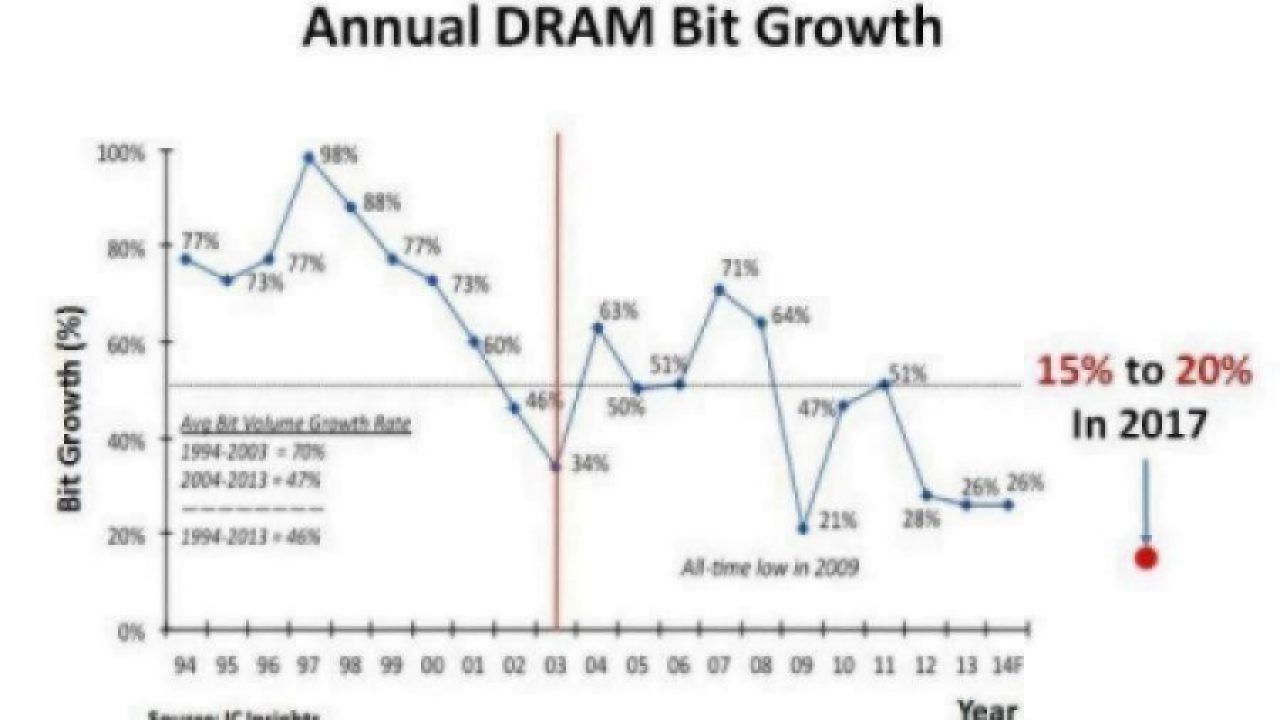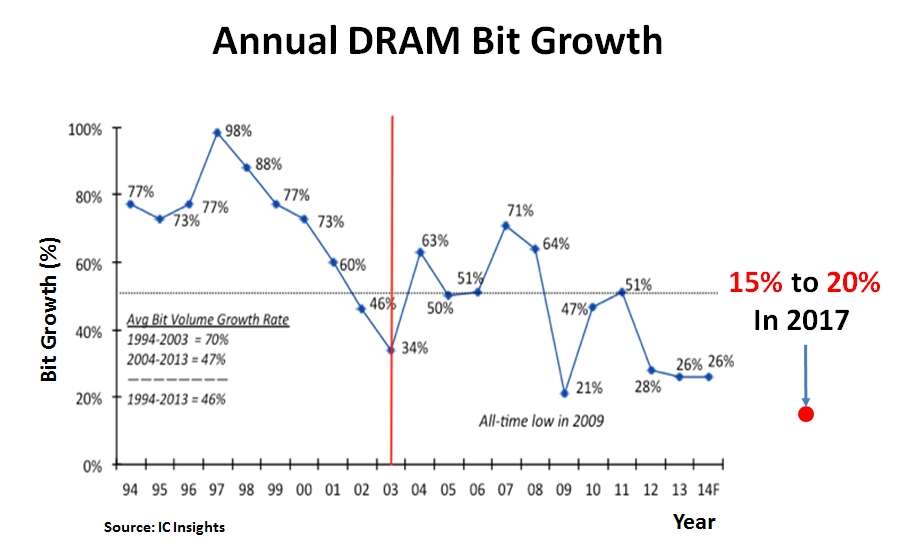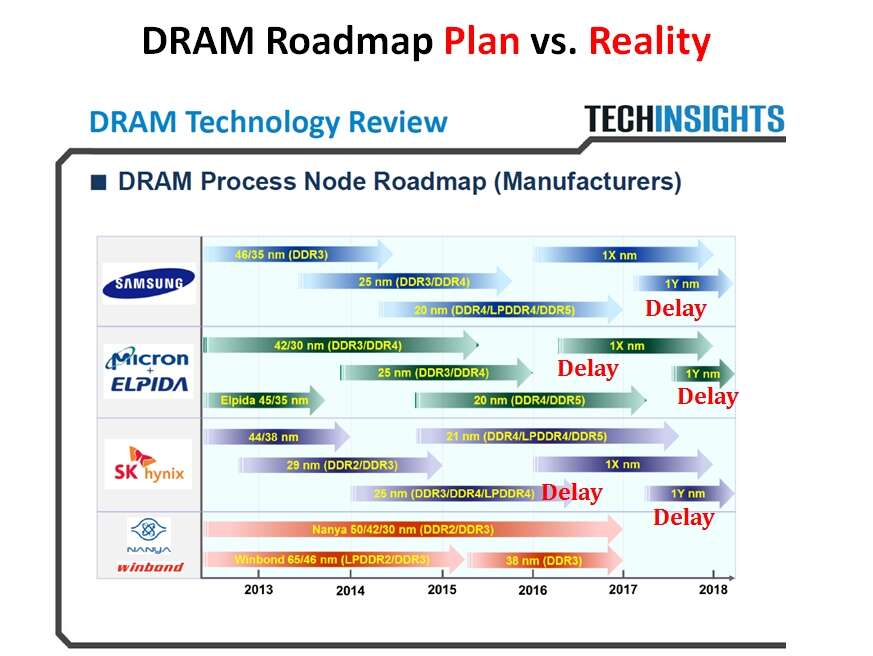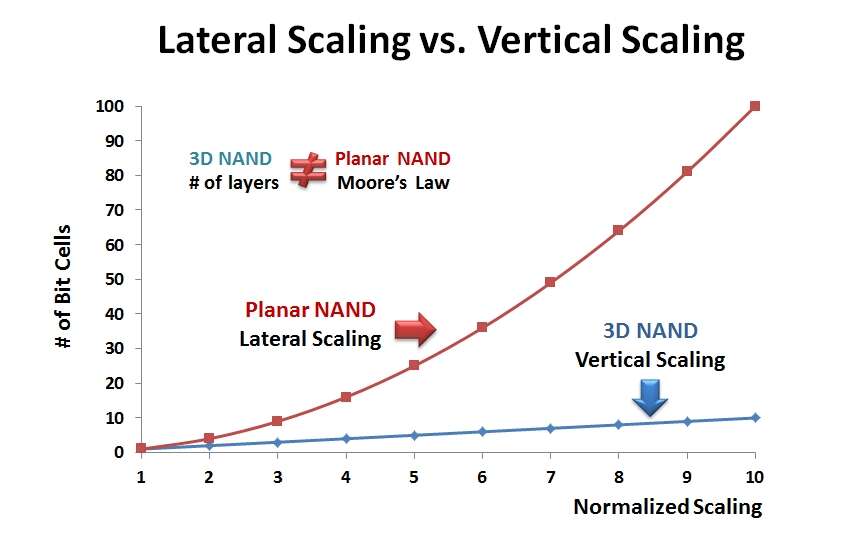Why Memory Prices Are Heating Up
Article By : Sang-Yun Lee, CEO of BeSang Inc.

The issue of increasing memory prices is more complicated than many people think.
DRAM and NAND prices are going up and projected to rise further, according to market analysts. Many people perceive the current memory market situation as a temporary imbalance between supply and demand. Or, they expect the market to settle when the manufacturing of 3D NAND flash reaches maturity. However, In case of DRAM market, no one knows when DRAM supplies will improve.
Observing the demand, although some market segments are growing, there are no killer applications or booming market segments. Therefore, the problem originates from the supply side.
According to Micron, DRAM bit growth is expected to be 15 to 20 percent in 2017 (noted below), the lowest bit growth in the last 20 years. Such small bit growth comes from DRAM scaling limitations. There has not been any news regarding DRAM scaling for a while. When bit growth is below 45 percent, it is a seller market. Thus, the DRAM oligopoly, slow bit growth, and sluggish fab expansion results in a long-term, tight supply. Ultimately, DRAM prices could increase without any improvements in supply.
There is extreme competition in the NAND market. Based on expectations that 3D NAND will significantly improve productivity, all NAND vendors invested billions of dollars in 3D NAND manufacturing. Therefore, oversupply was expected a while ago. However, this expectation proved false. 3D NAND had been more difficult to fabricate than previously thought. Currently, a few NAND vendors are struggling to ship 3D NAND.
Many analysts expect relief of supply when the manufacturing of 64-layer and 96-layer 3D NAND flash reaches maturity in late 2018. So, will there be enough NAND supply next year? As shown in the plot, lateral scaling (i.e. Moore’s Law) of planar NAND increases bit cell EXPONENTIALLY in a manner of power of 2. In contrast, the number of cell layers (i.e. vertical scaling) of 3D NAND increases bit cells LINEARLY. For the time being, planar NAND meets the exponential demand growth of bit cells based on Moore’s Law. Now that planar NAND faces scaling limitations, 3D NAND will have difficulties meeting the demand with just linear bit growth.
64-layer 3D NAND finally reaches price parity with planar NAND. For double and quadruple the memory sizes, 3D NAND should be 128-layer and 256-layer, respectively. Considering accumulated yield loss, manufacturing difficulties, and low wafer throughput, memory size expansion beyond 64-layer is a big challenge for 3D NAND. If 3D NAND reaches price parity with planar NAND at 1-layer, then it would be much easier to expand memory size vertically.
As discussed, high memory prices are not simply due to the imbalance of supply and demand anymore. It will be very difficult to see a cool down of memory prices from now on, because such high memory prices come from scaling limitations of memory devices. Ironically, memory vendors are making big money based on these memory scaling limitations. From the top five semiconductor ranking, three of them are memory vendors in the first half of 2017. SK Hynix and Micro, for example, heavily depend on DRAM because 75 percent and 65 percent of their revenue comes from the DRAM market, respectively.
For the time being, buyers could control the memory price and memory products have been disregarded as commodity. Now, it is a golden age for memory vendors and high memory prices will become a burden for buyers. That’s right, memory will become a seller’s market because of memory scaling limitations. How can we find a solution for high memory price? In 2016 and 2017, technology roadmaps (such as ITRS and IRDS) strongly recommend GAA (Gate All Around) transistors for continuation of transistor scaling and M3D (Monolithic 3D) IC for low manufacturing costs. So, customers should seek ultra-low cost memory devices proactively, where “GAA + M3D” is being utilized. Otherwise, customers will pay more for memory components and such high memory prices will become problematic for most electronic devices and systems.
–Sang-Yun Lee is founder and CEO of BeSang Inc.
Subscribe to Newsletter
Test Qr code text s ss





